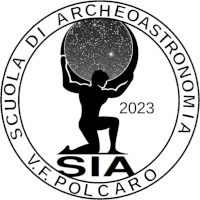Speakers
Description
Autori: Walter Ferreri; Mario Codebò; Barbara Bubbi; Henry de Santis;; Laura Citernesi
Riassunto : Alcuni disegni - eseguiti da Antoniadi, Barnard, Taffara ed un anonimo tra il 1898 e il 1945 al più tardi, tramite rifrattori di varie dimensioni - mostrano, ai limiti della visibilità, lati e spigoli dell'esagono boreale di Saturno. Riteniamo significativo il fatto che l'unica foto da noi esaminata - eseguita in data ignota al rifrattore Clark da cm. 61 dell'Osservatorio Lowell di Flagstaf - pur mostrando i poli del pianeta, non mostra il profilo dell'esagono, segno, come ci aspettavamo, del minore potere risolutivo della fotografia chimica rispetto all'occhio umano. La presenza dell'esagono boreale dal 1898 ad oggi dimostra che trattasi di una formazione stabile, sia pure suscettibile, come sembra, a variazioni.
Sommaire: Quelques dessins - réalisés par Antoniadi, Barnard, Taffara et un anonyme entre 1898 et 1945 au plus tard, à l'aide de réfracteurs de différentes tailles - montrent, aux limites de la visibilité, les côtés et les bords de l'hexagone nord de Saturne. Nous considérons comme significatif le fait que la seule photo que nous avons examinée - prise à une date inconnue de la lunette Clark cm. 61 de l'observatoire Lowell de Flagstaf - tout en montrant les pôles de la planète, il ne montre pas le profil de l'hexagone, signe, comme on s'y attendait, du plus faible pouvoir de résolution de la photographie chimique par rapport à l'œil humain. La présence de l'hexagone boréal de 1898 à aujourd'hui montre qu'il s'agit d'une formation stable, quoique susceptible, semble-t-il, de variations.
Abstract: Some drawings - made by Antoniadi, Barnard, Taffara and an anonymous between 1898 and 1945 at the latest, using refractors of various sizes - show, at the limits of visibility, sides and edges of the northern hexagon of Saturn. We consider significant the fact that the only photo we examined - taken on an unknown date of the Clark refractor cm. 61 of the Lowell Observatory in Flagstaf - while showing the poles of the planet, it does not show the profile of the hexagon, a sign, as we expected, of the lower resolving power of chemical photography compared to the human eye. The presence of the boreal hexagon from 1898 to today demonstrates that it is a stable formation, albeit susceptible, as it seems, to variations.

